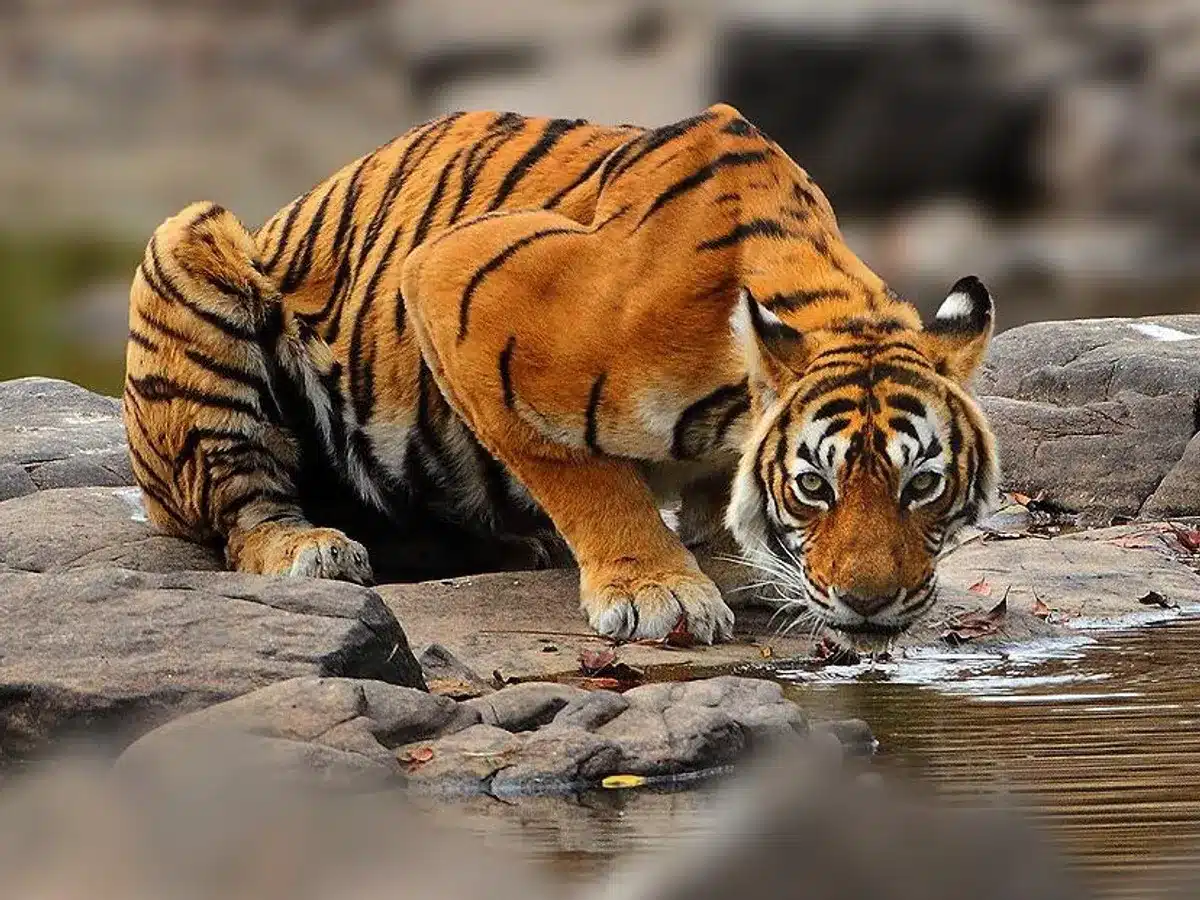Published by Oyepedia Travel LLP

The Royal Bengal Tiger, with its majestic appearance, has captured the imagination of many across the globe. Known for its striking stripes, gleaming eyes, and powerful presence, this big cat is not just an iconic symbol of India but also a living testament to the country’s rich biodiversity. As India’s national animal, the tiger has had a profound influence on the country’s mythology and culture, symbolizing power, grace, and resilience. Once a common sight across vast areas of the Indian subcontinent, the tiger population was decimated due to human activities. The sharp decline over the years, however, has been reversed thanks to concerted efforts aimed at its conservation.
The Decline in Tiger Population
A century ago, tigers roamed freely in India, with an estimated population of around 100,000 individuals across Asia. This number has drastically dwindled due to hunting, poaching, and habitat destruction. During British colonial rule, tigers were killed for sport, trophies, and to control their populations in response to the increasing human presence. Reports from the 19th century illustrate the extent of the slaughter; for instance, between 1821 and 1828, over 1,000 tigers were killed in western India alone. Similarly, in the 19th century, tigers were also hunted for their skins and bones, fueling the demand for exotic materials used in decorative items and traditional medicine. Consequently, the population plummeted, and by the mid-20th century, tigers were confined to isolated pockets of forests.

Key Factors Contributing to the Decline:
- Habitat Loss: Rapid urbanization, deforestation, and agricultural expansion have resulted in the loss of tiger habitats. Forests, once home to a variety of flora and fauna, are being cleared for roads, infrastructure, and agricultural activities, further fragmenting the tiger’s territory.
- Loss of Prey Species: Tigers depend on a stable food supply of prey species such as deer, antelopes, and wild boar. As human activity expands, these prey species are pushed into smaller areas, diminishing the tiger’s food resources. This forces tigers to enter human settlements in search of food, leading to human-wildlife conflict.
- Poaching and Illegal Trade: Poaching for tiger skins, bones, and other body parts remains a significant issue. Tigers have been poached for centuries due to their high demand in traditional medicine and for decorative items. Poaching, coupled with illegal wildlife trade, severely threatens tiger populations.
India’s Efforts in Tiger Conservation:
India has made significant strides in reversing the decline of the tiger population. Several initiatives and conservation efforts have played a crucial role in protecting this magnificent species. One of the most successful efforts has been Project Tiger, launched in 1973 by the Government of India. This project aimed to conserve tiger habitats and their prey species while reducing human-wildlife conflict. The project was designed to provide a statutory and institutional framework for tiger conservation and involved creating protected areas known as tiger reserves.
Project Tiger’s Success:

Since its launch, Project Tiger has seen notable successes in raising awareness, improving management, and boosting funding for tiger conservation. The formation of the National Tiger Conservation Authority (NTCA) in 2005 further strengthened the legal and administrative framework for tiger protection. The establishment of tiger reserves has provided safe havens for tigers to thrive. The increase in tiger numbers has been attributed to improvements in management, enhanced anti-poaching measures, and better monitoring techniques like camera traps and the capture-mark-recapture method.
Increase in Tiger Population:
According to the All India Tiger Estimation Report 2018, India’s tiger population increased from 1,411 tigers in 2006 to 2,967 in 2018. This represents a significant recovery in tiger numbers, making India home to approximately 70% of the world’s tiger population. Several states have witnessed substantial increases in tiger populations, including Madhya Pradesh, Maharashtra, Karnataka, and Uttarakhand. The state of Madhya Pradesh, for example, saw an increase from 218 tigers in 2014 to 526 in 2018.
Why the Boost in Tiger Numbers Matters:

The success of tiger conservation not only reflects the health of the tiger population but also indicates the overall health of India’s forests. Since tigers are apex predators, their recovery signals the recovery of the entire ecosystem, including herbivores and the vegetation they depend on. Healthy forests help absorb carbon dioxide and mitigate the effects of climate change. Thus, conserving tigers is crucial not only for preserving biodiversity but also for combating climate change.
Conclusion:
India’s tiger population recovery is a remarkable conservation success story. With continued vigilance, better habitat management, and strengthened law enforcement, the future of tigers in India looks promising. As the tiger population continues to rise, India stands as a global leader in wildlife conservation, demonstrating that concerted efforts can yield remarkable results. Protecting the tiger means safeguarding India’s rich biodiversity and ensuring that future generations can witness the majesty of this incredible creature.

